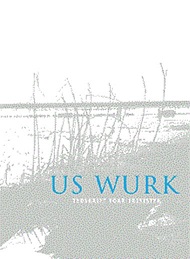De fariaasje tusken -ath en -at yn de Aldfryske tiidwurdútgong
Abstract
The Old Frisian verbal ending -ath (pl.pres. and 3rd sg.) appears either as <ath> or <at>. Van Helten’s assumption that they reflect pre-‘Verner’ stress alternation seems too far-fetched. The analysis of the verbal endings in the oldest Old Frisian sources, R1, B1, E1, H2 and the Old Skeltariucht in Unia, reveals various phonological factors, with a clear east-west divide, grouping R1 and E1 together against U and H2. The form -ath is the archetype (91% in B1). In the east, -at is a reflex of the emergence of the unmarked [t] instead of the marked [θ] in contexts with a low acoustic salience, as it appears preferably at the end of a phrase before a pause. In the western manuscripts, the variant -ath is best preserved following light roots. Long-distance dissimilation in e.g. werthath > werthat is found in most of the texts. These phonological conditions are superimposed upon a chronological gradual west-east directed transition -ath > -at. A statistical model covering the data from the five manuscripts renders their (approx¬imate) geographical location, age and the respective phonological conditions (different for east and west!) statistically significant, with geography being the most important factor. Together, they provide a 70% accurate prediction of the alternation between ath and -at on the level of indivudual tokens in the four texts.

